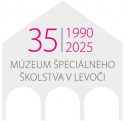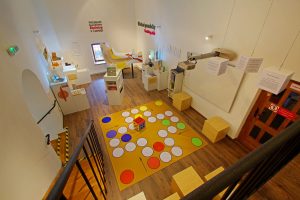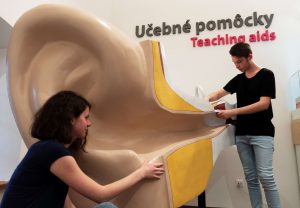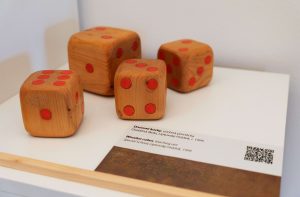The room consists of four separate units (called ‘islands’), an oversized 3D model of the human ear and eye, an interactive whiteboard, and high-space, removable, three-dimensional cubes.
Each island contains rare historical and contemporary teaching aids designed for students who are blind or deaf, as well as for those with mental health disabilities and autism. Visitors can learn the letters of the Braille alphabet using a replica of a Braille training table. Additionally, there are small wooden doors labeled with a hand pictogram that visitors can open to discover various objects that enhance the exhibition tour.
The oversized 3D model of the human eye and ear includes detachable parts, offering a unique opportunity for visitors to understand the function and disorders of these important organs.
The room also features high-space, removable, three-dimensional cubes that illustrate the experience of individuals with physical disabilities and the barriers they encounter daily. Educational programs for hard-of-hearing students are available, including the Fono 3 software on the interactive whiteboard and an oversized game of “Man, Don’t Get Angry,” where visitors can become the game pieces.





